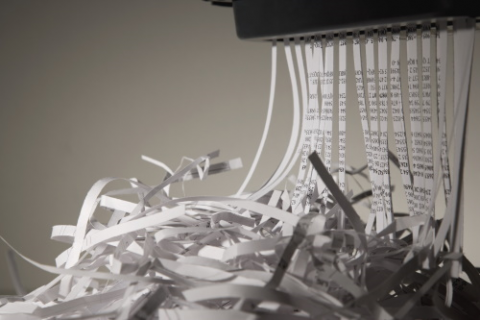The need to secure paper documents is often forgotten in the digital era, even though we’ve never fully achieved the paperless office. A managed print services strategy should not only secure endpoints and data, but printed output too.

Printed output has the same potential to lead to a security or compliance breach if the wrong person gets a hold of a stack of paper that contains sensitive information. Hard copies can contain Personally Identifiable Information (PII) subject to the Personal Information Protection and Electronic Documents Act (PIPEDA) or the General Data Protection Regulation (GDPR), or propriety intellectual property that gives you competitive advantage in your industry.
Today, most security teams are preoccupied by making sure data doesn’t leak through firewalls or via a stolen or lost laptop, when it can just as easily be stolen in hard copy.
A managed print services strategy must account for human behavior
In a busy office where people come and go, there’s also the potential for the wrong person to grab documents from a printer they shouldn’t have and walk out the door with them. Such a data breach can often go unnoticed because the person who printed the documents often assumes the printer malfunctioned and simply sends the job to the printer a second time.
In some cases, the documents may in fact be in the tray when the owner comes by to collect them, but between the time the print command was sent and actual collection, it’s possible for someone to snap photos of sensitive information with a smartphone.
So long as people are inclined to print out information in hardcopy, if only for their own personal convenience, there will be a need to secure paper documents. A managed print services strategy combines corporate policy and modern technology to safeguard printed output in line with an organization’s IT security policy.
Combine technology and policy to secure paper documents
In the same way it’s possible to track all the bits and bytes flowing in and out the corporate network, a managed print services strategy can allow you to have a digital paper trail.
In terms of modern technology, today’s multi-function printers can secure paper documents by watermarking pages so they’re traceable back to the owner. You can also keep detailed logs of all print activity so you have clear visibility into what documents are being produced and where they may end up, as well as any abnormal print activity.
The technology features enable you to create and support corporate polices that help secure paper documents. For instance, it’s not just documents sitting on printer trays for too long that put valuable data at risk. Storing documents longer than necessary in file cabinets and storage rooms can also lead to theft of sensitive information. This risk can be mitigated by scanning any printed information not already available digitally and destroying the hard copy.
Never leave an unwanted paper trail
In the same way a leaked email can put the future of a business in a severe jeopardy, so too can a stolen stack of paper. A managed print services strategy recognizes that endpoint security includes printed output, and that you must have the technological capability and corporate culture to effectively secure paper documents.
RJ Sahi is practice manager for PrinterLogix. Download our printer security primer today to see how you can get started securing your print infrastructure today and improve endpoint security.
